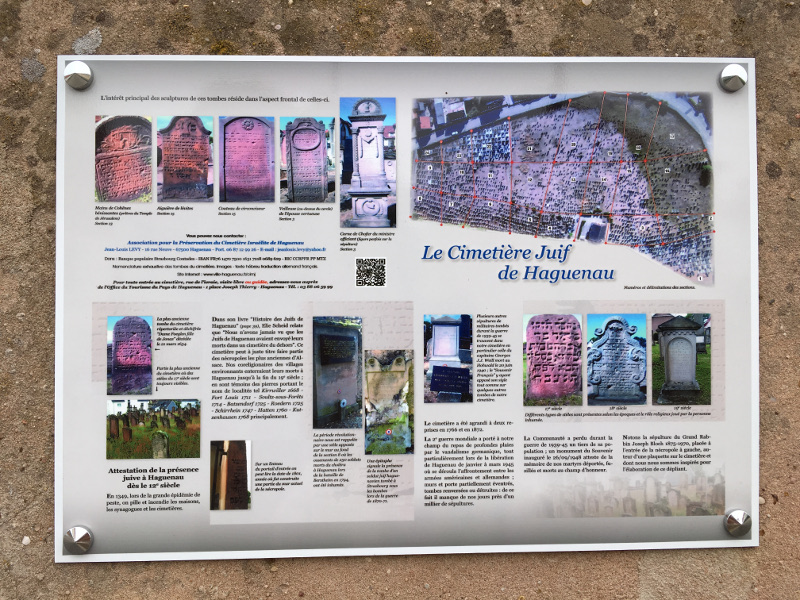Haguenau in Bas-Rhin at 48°49' N, 07°47' E. Alternate names: Hà wenau or Hà jenöi; German: Haguenau. 17 miles south of Strasbourg. Jewish population: 2,109 (in 1905). 1999 population was 32,242. Inhabitants are called Haguenoviens.
Dating from the beginning of the 12th century, Haguenau owes its origin to the erection of a hunting lodge by the dukes of Swabia. The city was founded by Frederick de Hohenstaufen, father of Frederick Barberousse, on the island of Moder. The city has a large forest, the largest undivided forest of France, within it. Frederick I said Barberousse, Emperor of the Holy Roman Empire, wrote the charter of Haguenau granting the city a certain number of privileges. Then freed from the Holy Roman Empire after 1262, Haguenau Décapole was created in 1357 and became the county seat. It lost its status of free city in 1648, during its annexation by France by the Treaties of Westphalia. In 1677, the city, including the famous imperial castle, was destroyed by the troops of Monclar, general of Louis XIV. In 1789, it had about 4,500 inhabitants. November 1918: Under the Alsatian Soviet Republic, Haguenau is organized into a soviet. About 30 km north of Strasbourg, this northeastern commune in the Bas-Rhin département of which it is a sous-préfecture has a population of 32,000. First mention of Jews is in 1235, a blood libel, but they were protected by the emperor and escaped harm. Jewry resided almost ceaselessly there since the Middle Ages. The first synagogue was confiscated during the expulsion of 1349. In 1436 Emperor Sigismund prohibited the citizens of Hagenau from renting or selling houses to the Jews. At their return, the Jews constructed a synagogue in a home on Street of Salt that was rebuilt after a fire in 1676 and served until 1820, date of the building of the actual synagogue. Haguenau was the seat of a rabbinate from 16th century, which exercised its authority over all of Haguenau up to Landau. 1689 Census of Jews: Hagenau 19.The Jewish population on the eve of World War II was 600 of whom 148 died in deportation or on the battlefield. Present synagogue on Rue des Juifs (plundered by the Nazis and later renovated) was erected in 1821. At the beginning of 1945, the city suffered a lot during the German offensive of Operation Nordwind. Between January and March, Haguenau was directly located in the offensive and subjected to uninterrupted bombings by the German artillery while 7000 civilians hide in cellars.Vandalized during the Occupation, harmed by a bombing in Libération, the synagogue was restored with its dependencies in 1959. Just after the end of WWII, Rabbi Joseph Bloch became the rabbi of Haguenau. He participated actively in the reconstruction of the community and the Orphanage Israelite de Haguenau. Two memorial stones recall the one, the synagogue of the 15th century and the fire and reconstruction in 1683. See photos and photos of Hagenau. The synagogue at 3, rue du Grand-Rabbin-Joseph-Bloch was built in 1821, and like most in the region, was damaged by the Nazis during World War II and later restored. Synagogue: Tel: 03 88 73 38 30 - Fax: 03 88 93 [January 2008]
Cemetery: Rue de l'Ivraie. Cemetery is known to have existed from sixteenth century, but probably was established during the Middle Ages. For a long time, it served all the Jews of the region. The oldest visible tombstone is from 1654. Information is available at the tourist office at Place de la Gare, 67500 Haguenau, tel. 03.88.93.70.00. www.ville-haguenau.fr [January 2008]
Photos courtesy This email address is being protected from spambots. You need JavaScript enabled to view it. [July 2019]
Â




